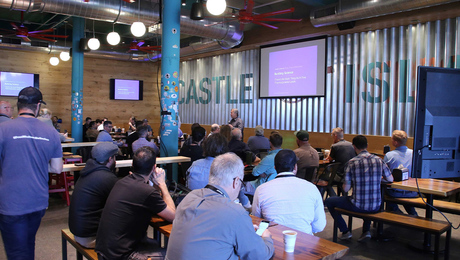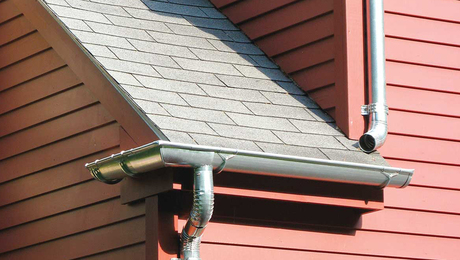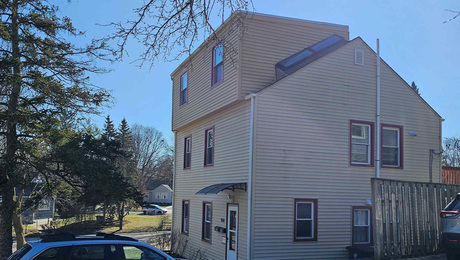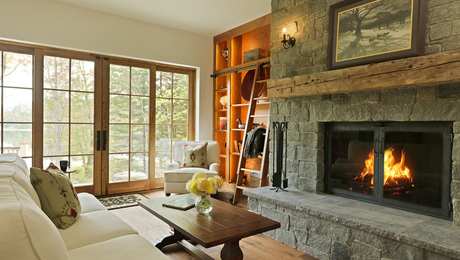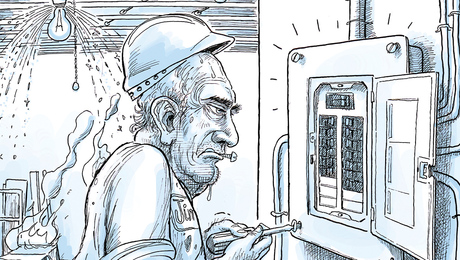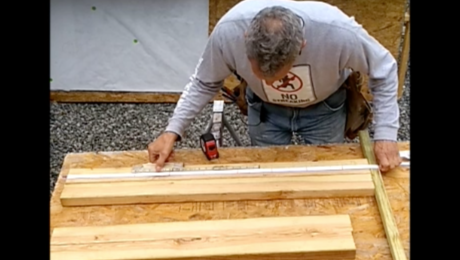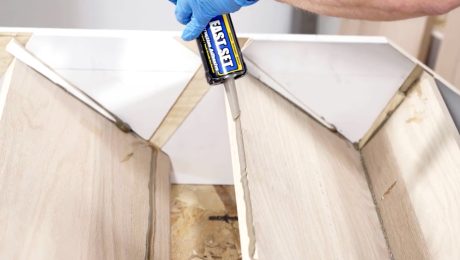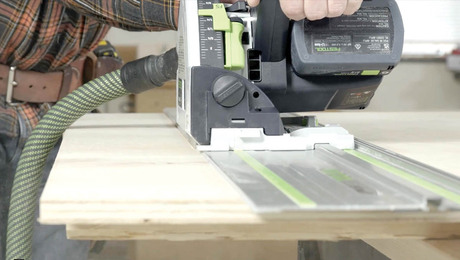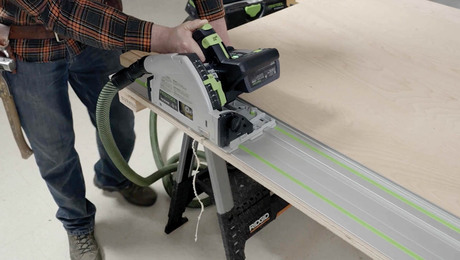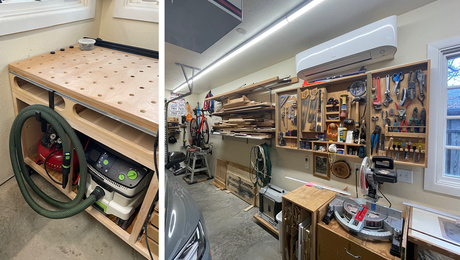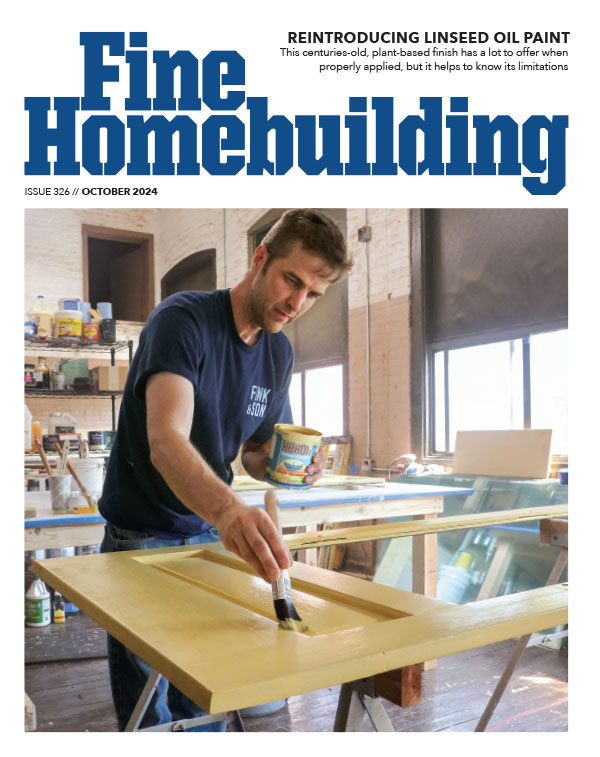Podcast Episode 675: Tools, Tools, Tools
Listeners write in about rebuilding California after wildfires, heating and cooling load calculations, and the best home building tools.
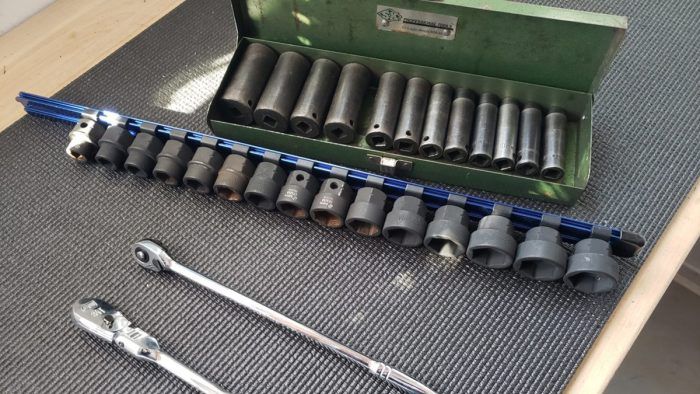
Welcome to the Fine Homebuilding podcast, our weekly discussion of building, remodeling, and design topics aimed at anybody who cares deeply about the craft and science of working on houses. This is senior editor Patrick McCombe. I’m joined by Fine Homebuilding associate editor Grant Baver, Fine Homebuilding editorial advisor Mike Guertin, and producer Andres Samaniego. Please email us your questions to fhbpodcast@finehomebuilding.com.
You can find previous podcasts and check out the show notes at finehomebuilding.com/podcast
 |
Check in:
- Mike shows us his new Arizona built-ins.
 |
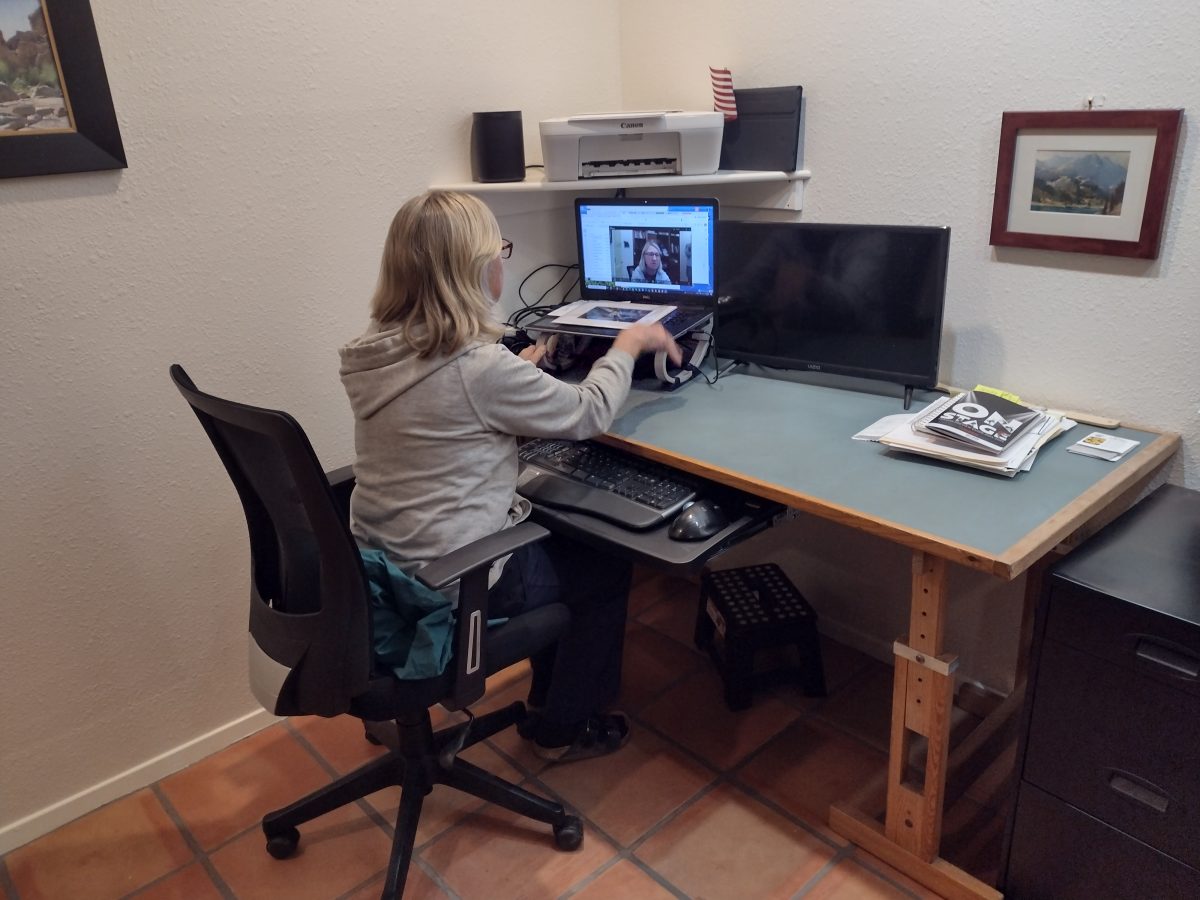 |
- Grant talks about traveling to Austin for stucco.
- Andres talks about video for showing how to do stucco.
- Patrick thanks the people we talked to at the Builders’ Show.
Listener Feedback 1:
Doug writes:
Hi Podcast Team,
There has been a lot of talk about the cost of rebuilding LA after the wildfire devastation, but I think there is another consideration. Can the industry do it in a timely manner? When the Marshall fire hit the Boulder area December 29, 2021, 1,000 homes were destroyed. To date, about two thirds of those have been rebuilt. In many cases, it took at least a year to deal with insurance, clear the lot, get plans and permits in place, and then find a contractor. Some opted for modular homes to speed up the process, but even then they still has to find a contractor to do the foundation and finish the home.
Others found their insurance insufficient to replace what they lost or found insurance deadlines impossible to meet. This last issue caused Colorado to pass a law requiring insurance companies to add an extra year if the Governor declares a wild fire emergency.
The scope of the rebuilding needed in LA is staggering. Are there enough contractors and suppliers to do the job? LA is known for lengthy permit times, so I hope officials will work to streamline the process. Unfortunately, this will also be fertile ground for ripoff artists that prey on any community after a disaster. After a major hail storm in any city, out-of-town roofers show up claiming to have a better deal for homeowners, only to take the money and run.
The final question is can we rebuild more resilient and defendable homes? This also requires some tough discussion as to whether homes should be built in some areas. Climate change is real despite what some politicians say. Trend predictions are for it to continue to be hotter and drier. Can we build homes to survive this, and at what cost?
Like many of our leaders, I have no answers just questions.
Doug
RELATED STORIES
Listener Feedback 2: It’s always appreciated when we get a follow-up stump-the-chumps-type email from someone asking a Podcast question.
Paul from Central California writes:
Hi Fine Homebuilding Podcast friends,
Thank you for taking my recent question on sizing a heat-pump/AC HVAC system for my modest home. As you recall, I didn’t have much luck with online calculators, so I simply summed up the BTU output of my window ACs to come up with a ballpark estimate.
Your input was very helpful, and confirmed that I was on the right track in thinking that 3.5 tons would be about right. I finally called my vendor for further confirmation of this figure. I imagine my sales rep gets this question only several hundred times a day, and he was ready with a simple questionnaire.
He asked for my zip code and the size of the home, predictably. He also asked for my ceiling height, of course. Then he asked, “Would you say the insulation in your home is good, average, or poor?” As a loyal Fine Homebuilding Podcast listener, I was ready! I detailed the wall insulation that I have upgraded to R-13 from the soggy, rodent-eaten R-11 that was here when I moved in. I detailed the new fiber-cement siding sitting on top of the new insulation. I told him about the roof insulation, which averaged a lumpy depth of 4 in., until I added R-30 when I converted it to a hot-roof assembly per the WUI guidelines for my area. I elaborated on how the new metal roof acts as a fantastic radiant barrier that wasn’t there before. I told him about the nine single-pane windows I replaced a few years ago with double-pane vinyl windows, plus the one window I added to lighten a dark room. I expounded on the special tinting the windows have to repel our punishing summer sun. I explained about the two exterior slab doors I have replaced with full-lite doors (one is dreadful, but the other is quite lovely). I detailed the floor insulation, which is minimal, maybe R-4, but will likely get upgraded soon with an additional, EPA-recommended R-19. I gave him every possible detail for a full manual-J calculation right there. You would have been so proud of me.
The rep listened patiently until I was exhausted, then said politely, “So… would you say it’s good, average or poor?” Deflated, I summed up all my many details with a single word. “Average,” I said, and received his final verdict of 3.5 tons, or 42,000 BTUs.
I guess in most cases, you don’t need to be so precise. I mean, they don’t sell a 3.4276 ton system, and if a Manual J calculation says that’s what I actually need, well, I’d still get the 3.5 ton unit. Thanks again for taking my question, and thanks also for your great work keeping us homeowners out of the weeds.
Paul
RELATED STORIES
Question 1: So last week we teased a show about tools. That started because we got this email from Wyatt.
Wyatt writes:
Hey guys,
Having finished a few recent projects, I have been cleaning my garage, reorganizing and upgrading some tools. One upgrade was a Dewalt Stealthsonic vacuum. The new vacuum was SO quiet it sparked me to look for a quiet air compressor. At this point, my friend brought up a good point: he only uses his stand-up air compressor for filling tires every now and again.
Growing up, my dad used a lot of air tools, but it seems in this day and age that battery tool reins supreme. I only have a small stand-up compressor, so if I need it for a nail gun I have to cart it where I need it if outside the shop. This sparked my interest in a battery nailer. What are your thoughts on a battery-powered nailer for your average homeowner? And I’d also like to hear thoughts on the transition away from air tools when it comes to grinders and impact guns.
I’m still in the double digits for the podcast. Early on you did a FHB Podcast on tools.
A more modern podcast on tools would be great too! I’d imagine technology has improved since the early days of this podcast.
Thanks,
-Wyatt
Metabo HPT 3-nailer kit ($200), with 18-gauge brad nailer and stapler, 15-gauge nailer. Cordless with one 2-amp-hour battery $150. MultiVolt brushless version is $279. Milwaukee’s 18-volt brad nailer is $250 (18v; no battery).
RELATED STORIES
Question 2: Battery tools
I still hear from friends, Podcast listeners, and FHB members wondering if they should buy a cordless tool when they have a corded version that works fine. Should they add or change platforms?
Mike, you’ve seen huge changes in what’s available for contractors. I’ve had friends tell me that they wish they made tools less-disposable. Do you think the tools that are available today are better or worse than 20 years ago?
What do you think Grant? Do you have favorite corded tools? Have you thought about replacing them?
RELATED STORIES
- Podcast Short: Why you should use a cordless saw
- Tool Test: Cordless Tablesaws
- Tool Test: Cordless Planers
Question 3:
Patrick asks:
Power tools get a lot more coverage in marketing and social media channels, especially cordless with advances in battery and motor technology. What new or favorite hand tools should folks be made aware of?
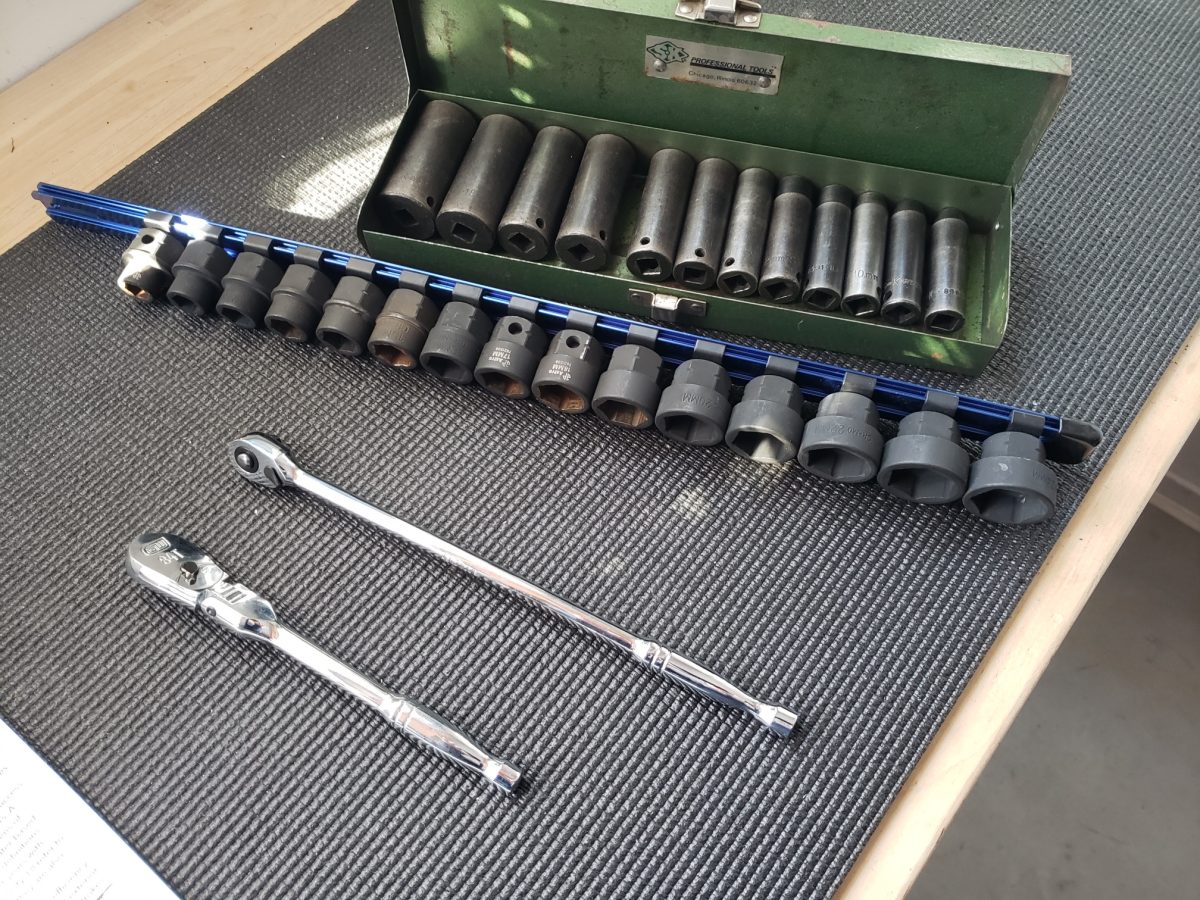
RELATED STORIES:
Sign Up for an All-Access Membership
Unfortunately that is all the time we have for today. Thanks to Mike, Grant, and Andres for joining me and thanks to all of you for listening. Remember to send us your questions and suggestions to fhbpodcast@finehomebuilding.com and please like, comment, or review us no matter how you’re listening–it helps other folks find our podcast.
Happy Building!
Fine Homebuilding Recommended Products
Fine Homebuilding receives a commission for items purchased through links on this site, including Amazon Associates and other affiliate advertising programs.
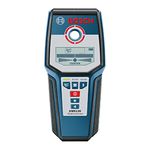
Bosch Wall Scanner (GMS 120)
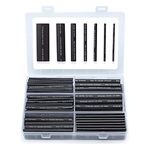
Heat-Shrink Tubing
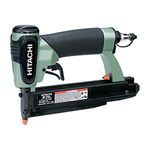
Hitachi Pin Nailer (NP35A)
